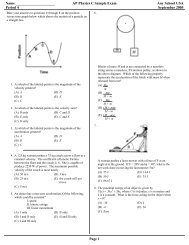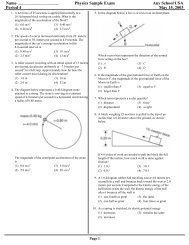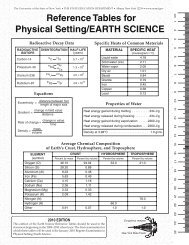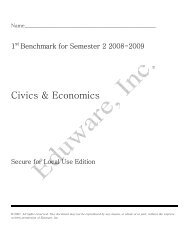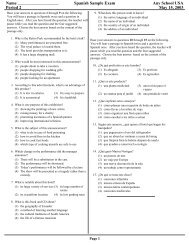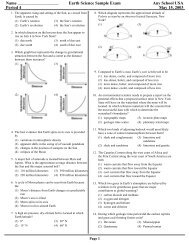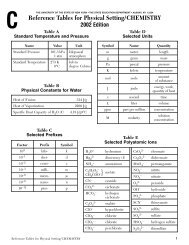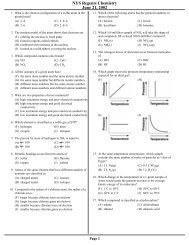The Wizard Test Maker - Eduware
The Wizard Test Maker - Eduware
The Wizard Test Maker - Eduware
You also want an ePaper? Increase the reach of your titles
YUMPU automatically turns print PDFs into web optimized ePapers that Google loves.
9.<br />
AP Macroeconomics Sample Exam<br />
<strong>The</strong> point of view expressed in this cartoon is that the 1997 increase in the minimum wage would<br />
(A) significantly reduce the gap between the rich and the poor (C) help workers climp the ladder of success<br />
(B) encourage the poor to appreciate the concern of politicians (D) be unlikely to provide any major benefit to the poor<br />
(E) save the United States economy forever<br />
10.<br />
An accurate description of the nation's business cycle<br />
between 1960 and 1980 is that it<br />
(A) experienced numerous periods of prosperity and<br />
depression<br />
(B) was most similar to the business cycle between 1930<br />
and 1940<br />
(C) remained generally prosperous<br />
(D) stayed at the average business level<br />
(E) destroyed the United States economy forever<br />
11. Who first introduced the consumption function<br />
(A) Adam Smith<br />
(D) Thomas Malthus<br />
(B) John Maynard Keynes (E) Vilfredo Pareto<br />
(C) David Ricardo<br />
12. According to Okun's Law, the growth rate of real GDP is<br />
given by 2.7% - 2dU, where dU is the change in the<br />
unemployment rate (expressed in percent per year). If the<br />
unemployment rate steadily increases from 5% to 7% from<br />
January to June, then<br />
(A) the economy shifts to a new point along its production<br />
possibilities frontier<br />
(B) the economy is rapidly recovering from a recession<br />
(C) the economy is displaying sustained economic growth<br />
(D) real and potential GDP are growing<br />
(E) the economy is in a recession<br />
13. In a closed economy without government intervention,<br />
planned aggregate expenditure (AE) is<br />
(A) Consumption + Savings<br />
(B) Consumption + Investment<br />
(C) Savings + Investment<br />
(D) Aggregate output + Investment<br />
(E) Aggregate output – Investment<br />
14. All of the following are investment EXCEPT<br />
(A) a restaurant owner buying tables<br />
(B) a department store adding to its inventories<br />
(C) purchasing a share of IBM<br />
(D) an automobile manufacturing purchasing a new plant<br />
(E) a software company purchasing a new computer<br />
Page 2



